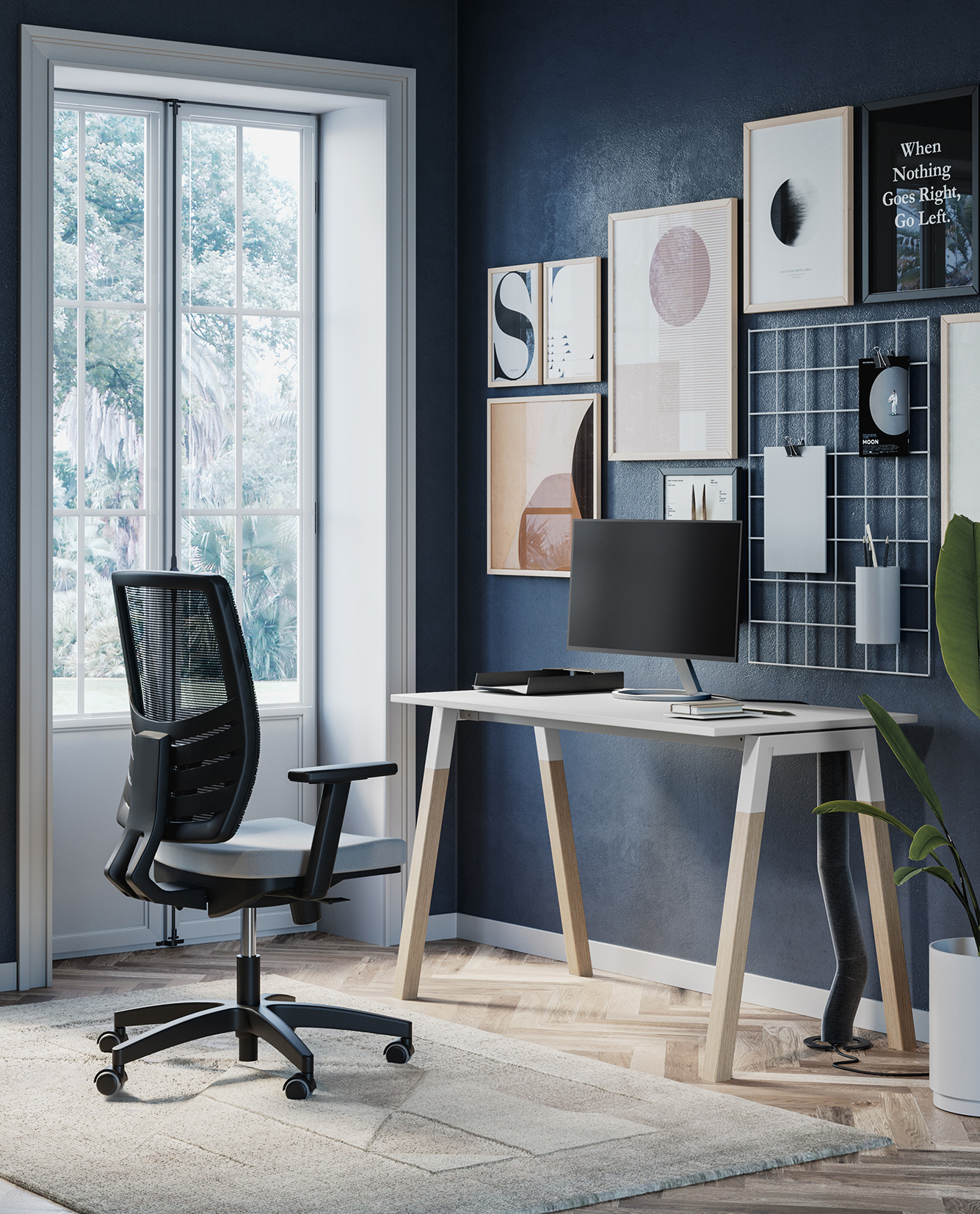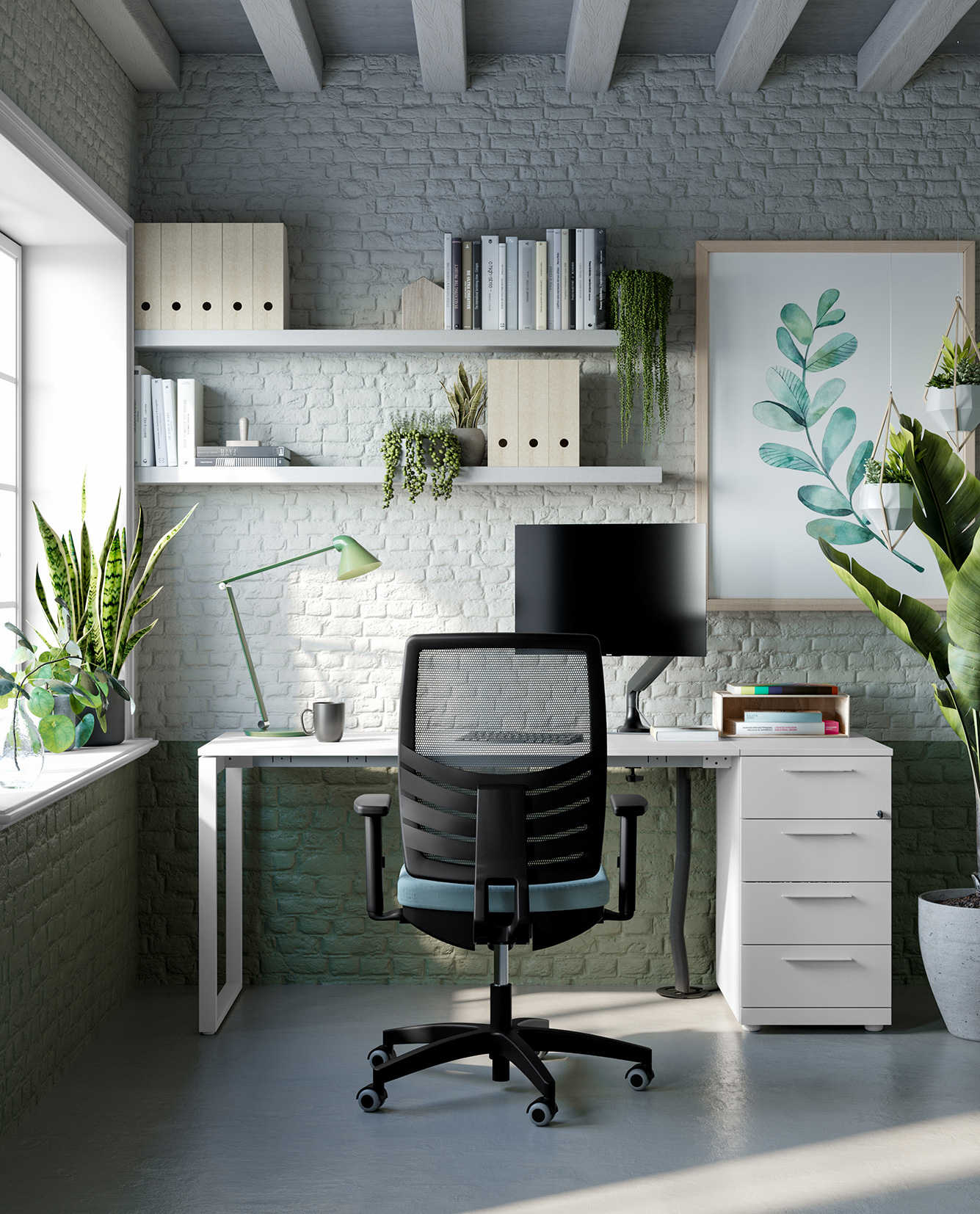A comfortable working position is essential both in the office and at home. Investing in ergonomics has long- and short-term benefits: fewer illnesses, injuries and chronic disorders, particularly muscular and skeletal ones or linked to eyesight, higher productivity and lower stress levels.
How do you create the perfect workstation? You have to consider 9 primary factors, linked to furniture, accessories set-up and the surrounding environment.

Here are our guidelines, suitable for office design and home office design.
- Chair –You need to immediately ask yourself a few questions to find out which features best suit your requirements.
Do you need a headrest? You move about a lot, so are casters essential? Do you need armrests or are you too short on space? An ergonomic chair must allow adjustment of its structural elements, to adapt to the needs of people of different heights and weights. The chair height must allow you to sit in an erect position throughout the day, to reduce strain on your arms, shoulders and wrists. The ideal height allows you to keep your forearms parallel to the floor or inclined slightly downwards, and your back straight. The backrest must follow the natural physiological curve of your spine: the best ergonomic chairs have adjustable lumbar support, which adapts to different body shapes.
These are just some of the elements to consider: find our special guide to choosing here. - Desk – It must suit the work, physical and space requirements of the user. According to a study by Cornell University, there are five principal operational tasks both in the office and working at home: typing, using a mouse, writing, reading documents and looking at a monitor. Even in a space measuring a few square metres at home, you can create an workstation that suits agile working, choosing comfortable desks that encourage productivity.
If you share a desk with other people at home, desk height may differ according to individual physical needs.
How do you manage this critical issue? Sit-stand desks like Pop Ad, whose height can be electrically adjusted throughout the day, allow you to work both sitting and standing. According to certain studies, working standing up even for just one hour a day can reduce neck and back pain by up to 54%.
Find a special detailed report on the benefits of sit-stand desks here. - Monitor height and distance – Your eyes should always be at arm’s length (about 50-80cm) from the screen at a height of about 7-10cm below the top edge of the display. This allows you to keep your back straight and stops you from bending your neck. With smaller or larger screens it may be necessary to tilt the monitor, usually up to a maximum of 35° (upwards or downwards). Monitor stands allow you to modify screen position as the moment requires and to also position smaller devices like a laptop or tablet correctly.
- Ergonomic mouse and keyboard – They must allow you to adopt a position that does not strain hands and arms, with particular attention to the wrists, especially if you are at risk of carpal tunnel syndrome.
- Room lighting – The computer must be positioned so that the workstation is always well-lit, without glare on the monitor or light shining directly in your eyes.
- Telephone accessories and position – If you spend a lot of time on the telephone, make sure you wear (or ask your company to provide) a headset: this will cause less muscular stress to your neck, shoulders and arms.
- Archive space – To avoid occupying a part of the desk, we suggest you to set up an area of the workstation or your work room specially for documents, like a cupboard or drawers.
- Air quality – Getting some fresh air is essential for worker health. If there are windows, open them for at least 5 minutes every 2 hours. If there are no windows, you need a ventilation system, which should be cleaned regularly.
- Temperature and humidity – Extremes are not allowed. According to the World Health Organization, the ideal office temperature and therefore also at home is between 18°C and 24°C. The recommended humidity level is between 40 and 60%.

Setting up an ergonomic home office is essential, as all of our daily actions contribute to our health, physical and mental well-being. If you are working from home, read our special guide on this subject!

